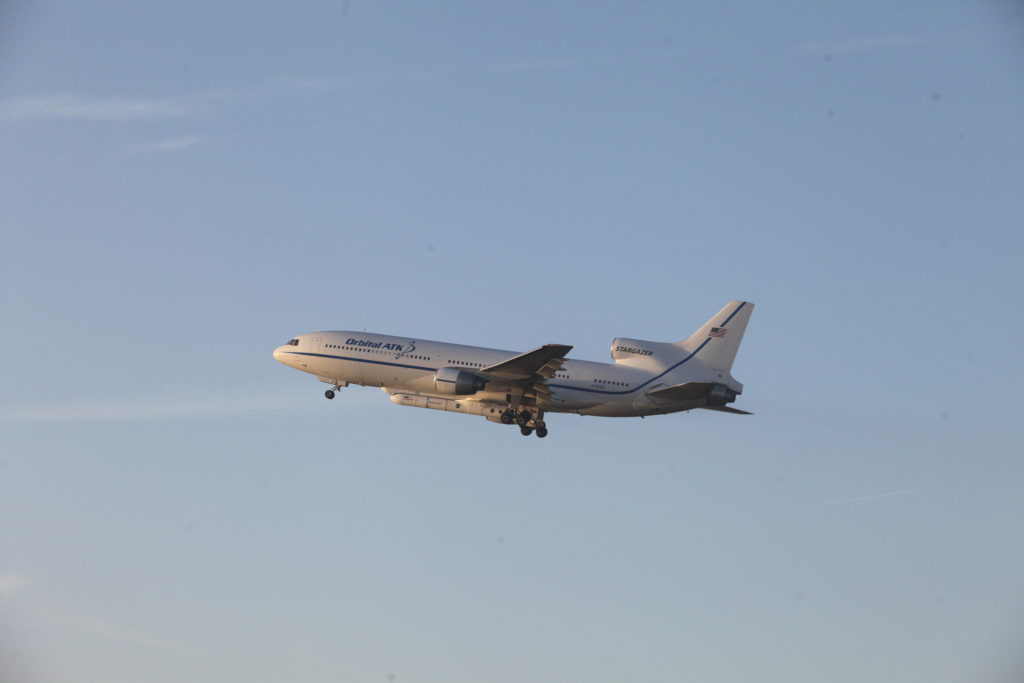
Meteorologists with the U.S. Air Force 45th Weather Squadron are predicting a 90 percent chance of favorable weather for the launch of NASA’s Cyclone Global Navigation Satellite System (CYGNSS) mission, scheduled for Wednesday at 8:25 a.m. EST. The one-hour launch window opens at 8:20 a.m.
The CYGNSS spacecraft will ride into orbit aboard an Orbital ATK air-launched Pegasus XL rocket. Orbital ATK’s modified L-1011 aircraft, “Stargazer,” will deploy the Pegasus XL and its CYGNSS payload from an altitude of approximately 39,000 feet above the Atlantic Ocean.
During the two-year mission, the eight CYGNSS microsatellites will fly in formation about 316 miles above Earth’s surface, focusing on the tropics and studying wind speeds and intensification of tropical cyclones such as hurricanes.
Live updates from the countdown will begin at 7 a.m. here on the blog and on NASA Television.
